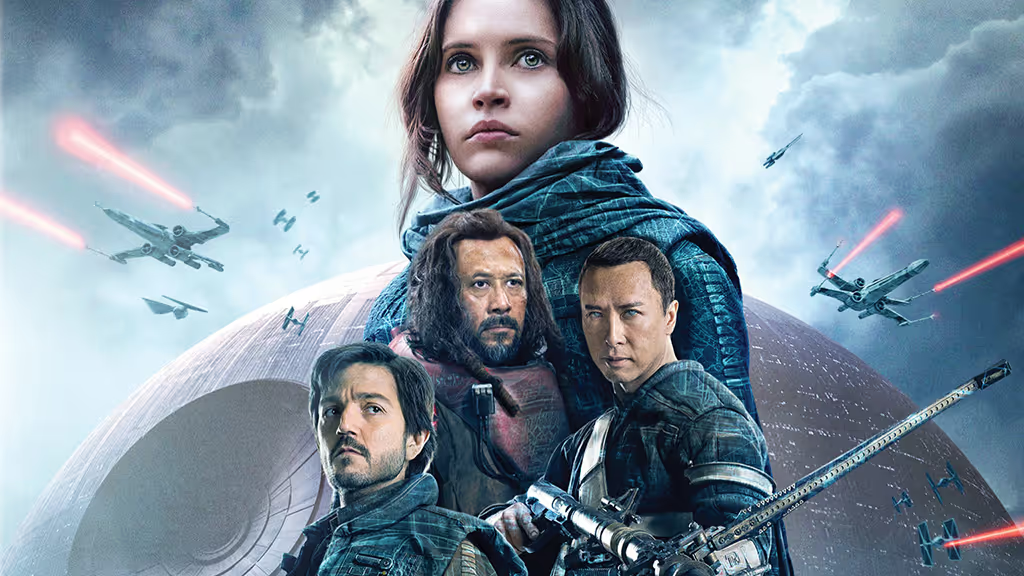Polyamorous Triad — the End??
As a starry-eyed teenager, I made song and dance when the new installments in the Star Wars franchise were announced; I was excited to see my favorite stories resume on the screen. Yet, the newest installment, Rogue One, has come out to mixed fanfare. What is all the fuss about?
Introduction
There’s something about Star Wars: The Force Awakens that feels both delightful and urgent, as if it were a both a joy to create and a story that must be told at this particular moment in history. People who lined up to see the film when it released last December—and then immediately bought tickets to see it again—are now buying the DVD or Blu-Ray or streaming version so they can watch The Force Awakens for the fifth (or tenth) time at home. They’re also creating fanart, writing their own narratives, and celebrating the idea that the Hero’s Journey has been opened up to a new group of heroes.
At The Guardian, Steven W. Thrasher calls The Force Awakens “Black Lives Matter’s first science fiction film,” noting that “the key to the political and moral liberation of everyone depends upon the rebellion and emancipation of black people.” Meanwhile, Natalie Fisher at Hypable builds a case that Star Wars is setting up the character of Poe Dameron (Oscar Isaac) to be a canonically gay character and the series’ “first queer protagonist.”
Social Discourse
Of course, if you’ve been on Twitter or Tumblr lately you’ve probably seen fans creating original artwork and memes that present The Force Awakens characters Finn (John Boyega) and Poe not only as queer, but also as members of a polyamorous triad with Rey (Daisy Ridley). The popular hashtag is “OT3″—the name derives from the fan abbreviation OTP, or “one true pairing.” These fans understand that it is extraordinarily unlikely that Star Wars will end its nine-episode saga with its heroes in a polyamorous relationship, but that isn’t the question people are asking as they reblog images of Finn, Rey, and Poe together. Instead, they’re asking the question that Maddy Myers explores at The Mary Sue: “Can fandom bring about Death of the Author so effectively that we make our own ‘truth’?”
Fans know, after all, that ending a beloved series with a polyamorous triad isn’t impossible; John Rogers did it, canonically, in TNT’s Leverage. They also want representation in their stories; plenty of fans were imagining Harry Potter’s Hermione Granger as a person of color before Alanna Bennett wrote about racebending Hermione within the Harry Potter canon in BuzzFeed. This December, it was announced that Noma Dumezweni would be playing Hermione in the upcoming production of Harry Potter and the Cursed Child—a long-held fan theory transfigured into reality.
As J.K. Rowling famously tweeted:
Canon: brown eyes, frizzy hair and very clever. White skin was never specified. Rowling loves black Hermione 😘 https://t.co/5fKX4InjTH
— J.K. Rowling (@jk_rowling) December 21, 2015
That’s where we’re going, with the Hero’s Journey and heroic stories. Fans on Tumblr draw the representation they want to see, Harry Potter gets a canonical black Hermione, and Lin-Manuel Miranda recasts the Founding Fathers as men of color in Hamilton. Steven Universe, a Cartoon Network series designed for young audiences (and voiced almost entirely by actors of color), features a lesbian relationship at its center. Archie Comics prints an issue where Jughead Jones casually speaks about his asexuality.
Clearly we have a long journey ahead; it isn’t enough to make queer characters and polyamorous characters and characters of color heroes in fiction if the world isn’t granting them the same status in life, for starters. Likewise, until we get greater representation among the people who create and tell our biggest cultural narratives, we’ll end up with situations like J.K. Rowling’s egregious characterization of Native Americans in her recent History of Magic in North America. As researcher Adrienne Keene writes, in “Magic in North America”: The Harry Potter franchise veers too close to home” at Native Appropriations: “We fight so hard every single day as Native peoples to be seen as contemporary, real, full, and complete human beings and to push away from the stereotypes that restrict us in stock categories of mystical-connected-to-nature-shamans or violent-savage-warriors.”

A lot of Star Wars fans see a character like Poe Dameron as a complete human being, but that’s also because we’ve ascribed characteristics to him from the few hints we’re given in his brief screen time. We’ve created the character we wanted, and we’re hoping that the remaining Star Wars episodes deliver, if not precisely the Poe we’ve written for ourselves, one that feels similarly whole. If he becomes a stereotype, we’ll turn away from Star Wars. We’ve done it before.
Other Star Wars fans are taking to social media to argue that the franchise has “too much” representation; that including a female protagonist in both The Force Awakens and the upcoming Rogue One: A Star Wars Story is “SJW bullshit” and “feminist propaganda,” as Mic (and numerous other outlets) reported. The two-minute trailer features two female characters along with half-a-dozen male characters, but since the women are not shunted into supporting roles, the movie is labeled “feminist.” (It may very well be a feminist movie, but that shouldn’t be the reason why.)
So that’s where we are, in the world of fans, fiction, and representation: making progress and mistakes simultaneously. But if you want to know why so many people are re-watching Star Wars: The Force Awakens and the Rogue One trailer, why it and Hamilton and Steven Universe and Mad Max: Fury Road and Legend of Korra and even good old Archie Comics feel so vibrant and compelling and important, it’s because these stories feel like—well, I’ll let Maddy Myers say it:
“It’s like someone wrote a A New Hope fan-fiction where the characters look like me and my friends.”
